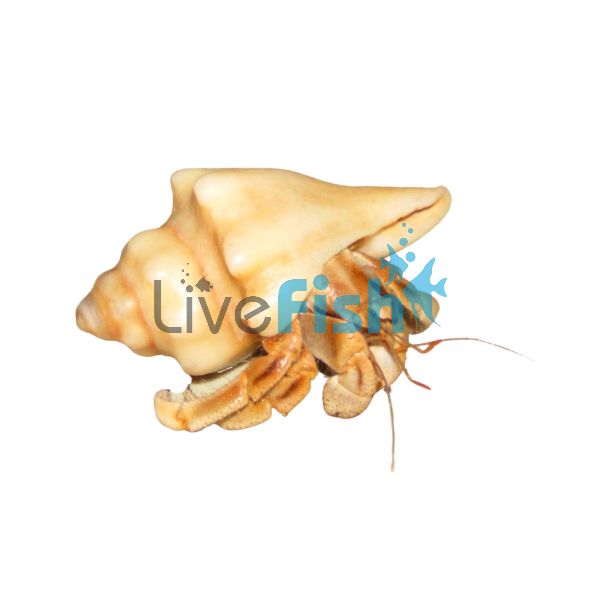Crab Land Hermit - Small
Land Hermit Crab
The Land Hermit Crab is often one of the first pets that kids in Australia might get due to their relatively low maintenance requirements. However, land hermit crabs are intelligent and active little creatures that require some level of dedicated care to ensure they live a happy and thriving life in captivity. These terrestrial crustaceans are native to coastal regions of Australia and are known for their unique habit of using empty shells for protection, which they change as they grow.
Land Hermit Crabs have a distinctive appearance, with a soft, coiled abdomen that they protect by living in a borrowed shell which you’ll rarely see. Their hard exoskeleton covers their front body, which includes their claws and legs. Typically, their coloration ranges from a light brown to a reddish hue, often with some mottling or spots. They have two large, prominent eyes on stalks, which give them excellent vision, and their antennae and mouthparts are constantly moving as they explore their environment. As they grow, they periodically malt, shedding their exoskeleton and moving to a larger shell.
This is why it is important to provide these crabs with a range of different-sized shells in their environment that they can swap into as they grow. Land Hermit Crabs are social creatures that thrive in groups. They are most active at night, spending their time exploring, foraging, and climbing. Hermit crabs communicate with each other through a variety of sounds and gestures, especially during shell exchanges, where they may line up and swap shells in a fascinating social behavior. Breeding in captivity is extremely challenging and rarely successful, as it requires specific conditions and a transition from a marine larval stage to land.
Tank Recommendations for your Land Hermit Crab
A spacious tank of at least 70 litres is recommended for housing a small group of Land Hermit Crabs. The tank should have a secure lid to prevent escapes and provide plenty of ventilation. A larger floor space is also highly recommended when compared to height. The substrate should be a mix of sand and coconut fiber to allow for burrowing, with a depth of at least 6-8 cm. Maintain a humid environment with a humidity level of 70-80% and a temperature range of 24-28°C which can easily be achieved by having a shallow water dish or a dedicated reptile humidity and temperature control unit. Include various climbing structures, hiding spots, and spare shells of different sizes for them to choose from.
Suitable Tank Buddies
Land Hermit Crabs are best kept with other hermit crabs. They are social and will benefit from the interaction with their kind. Being a terrestrial species there aren’t any other major tank mates fish-wise they can be kept with.
Usually Compatible
Land Hermit Crabs usually do well with other non-aggressive terrestrial invertebrates, such as certain species of millipedes or isopods, which share similar habitat requirements and can coexist peacefully.
Sometime Compatible
They can sometimes coexist with small, non-aggressive reptiles or amphibians that thrive in similar humid environments, but careful monitoring is required to ensure there are no conflicts.
Rarely Compatible
Avoid housing Land Hermit Crabs with larger, aggressive creatures that could pose a threat to them, such as large lizards, birds, or mammals.
Feeding your Land Hermit Crab
Feeding Land Hermit Crabs is relatively easy, as they are omnivores with a varied diet. Provide a mix of commercial hermit crab pellets, fresh fruits, and vegetables. Supplement their diet with occasional protein sources like cooked chicken, fish, or eggs, and offer calcium supplements like cuttlebone or crushed oyster shells to support their exoskeleton development. Fresh water and deep salt water baths should always be available for them to drink and fully submerge themselves in.
| Scientific Name | Coenobita variabilis |
|---|---|
| Care Level | Easy |
| Common Names | Land Hermit Crab, Coastal Hermit Crab |
| Diet | Omnivore |
| Fish Family | Coenobitidae |
| Lifespan (years) | 15 |
| Max. Length (cm) | 4 |
| Min. Tank Volume (l) | 70 |
| Origin | Australia |
| Reef Safe | Yes |
| Sociability | Peaceful |
| Venomous | No |
| Water Conditions | Humidity 70-80%, temperature 24-28°C |




